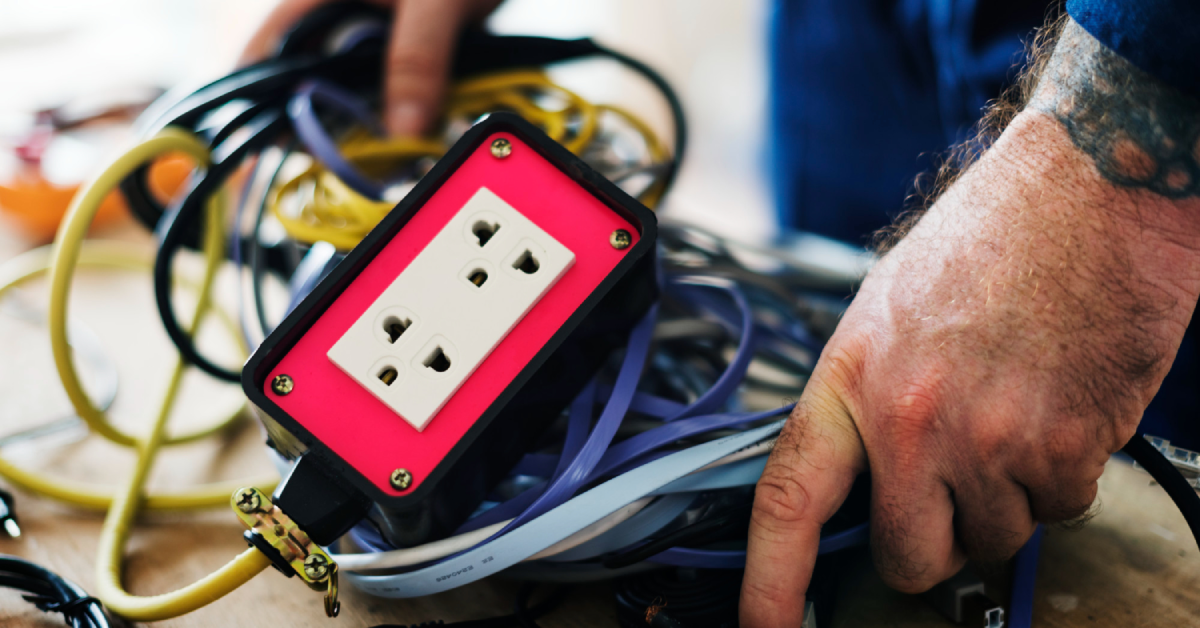Have you ever stopped to think about what’s behind your walls? Most of us don’t. We’re too busy living our lives to wonder what kind of wiring is running behind the drywall. Until something goes wrong.
A flickering light. A breaker that trips for no clear reason. A burning smell that comes and goes. These subtle signs can be the tip of the iceberg—and the real problem could be far more dangerous than you think.
According to the U.S. Fire Administration, electrical fires account for tens of thousands of residential fires every year, many of them caused by outdated or faulty wiring. Yet homeowners often delay addressing these issues because rewiring sounds like a huge, expensive project. But the reality is this: the longer you wait, the greater the risk.
In this blog, we’ll walk you through what electrical rewiring is, why it’s critical for older homes, the emotional toll unsafe wiring can take on your family, and how investing in rewiring can bring you long-term peace of mind.
⚙️ What is Electrical Rewiring, and Why Is It Needed?
Electrical rewiring involves replacing old, outdated, or hazardous wiring with modern, safe, and code-compliant materials. It often includes updating electrical panels, replacing outlets and switches, installing grounded wiring, and ensuring your system can handle today’s electrical demands.
If your home was built before the 1980s, there’s a high chance it’s due for rewiring—especially if it still has aluminum wiring, cloth-insulated wires, or a fuse box instead of a circuit breaker panel. These outdated systems weren’t designed to support the heavy load of modern households.
Think about what we plug in today: flat-screen TVs, gaming consoles, computers, mobile device chargers, high-powered kitchen appliances, HVAC systems, electric vehicles—the list goes on. The average home consumes far more electricity than homes did even 30 years ago.
Without the proper wiring infrastructure, your home becomes a danger zone.
🔥 Real Risks: What Could Go Wrong with Outdated Wiring?
The signs may start off subtle—lights dimming when an appliance turns on, outlets that don’t work, or fuses that blow more frequently than they should. These warning signs are often overlooked until a major issue arises.
But what you can’t see is what’s truly concerning. Behind your walls, old wiring can degrade, loosen, or overheat. If a wire sparks in a hidden space, it can ignite insulation or dry wood—leading to a full-blown fire.
Some of the most common issues caused by bad wiring include:
- Electrical fires due to overheating or exposed wires
- Power surges that damage electronics
- Shock hazards at outlets or fixtures
- System overloads causing frequent breaker trips
- Insurance denials or premium increases due to non-compliance
It’s not just about the house—it’s about the people in it. If you’ve got children, elderly parents, or pets, the safety concerns are even more critical.
💭 The Emotional Toll of Living with Electrical Uncertainty
Home should be a place of comfort. But when you’re constantly wondering whether the flickering lights mean danger, or if your child’s bedroom outlet is safe, it becomes a source of anxiety.
Many homeowners report experiencing:
- Chronic stress: Worrying about fires, outages, or whether their home is “up to code” eats away at peace of mind.
- Decision paralysis: Fear of cost or disruption leads to procrastination—even when they know the risk is real.
- Guilt: Parents often feel guilty for “putting it off,” especially when safety is involved.
There’s also the fear of the unknown:
“Will I have to tear down walls? How much will this cost? Will I be able to stay in the home during rewiring?”
These concerns are valid—but they shouldn’t prevent you from taking action.
🛠️ The Truth About Rewiring: It’s Easier Than You Think
While electrical rewiring is a significant project, it’s far more manageable with the right contractor. Today’s licensed electricians are trained to minimize disruption, protect your home, and communicate each step clearly.
In most cases, rewiring does not require tearing down all your walls. Technicians use strategic access points and advanced tools to fish new wiring through existing pathways. You’ll get a clear timeline, an honest quote, and a plan that prioritizes both safety and convenience.
Some rewiring jobs can be done in stages—starting with the most at-risk circuits and working through the house over time. Others can be completed within a few days. Either way, you’re never without options.
🧰 What Does Electrical Rewiring Typically Include?
A standard rewiring project may involve:
- Replacing old, hazardous wiring (aluminum, knob-and-tube, cloth-wrapped)
- Installing grounded wiring and modern outlets
- Upgrading the electrical panel and circuit breakers
- Adding new circuits for appliances or home offices
- Improving grounding and bonding for safety and surge protection
- Bringing all components up to National Electrical Code standards
Depending on the size of your home and the condition of your current system, the scope may vary. A licensed electrician will perform an inspection and walk you through exactly what needs to be done—and why.
💡 The Long-Term Value of Rewiring
Let’s talk about what you get for your investment:
- Peace of mind: You sleep better knowing your home isn’t at risk of an electrical fire.
- Insurance benefits: Some insurers lower premiums when homes are brought up to code.
- Home value increase: Rewiring improves resale value and passes inspections faster.
- Modern convenience: No more juggling plugs or tripped breakers—you can actually use your home the way you want to.
- Preparedness: You’re ready for future tech—EV chargers, smart systems.
Rewiring doesn’t just protect your home—it future-proofs it.
📞 What to Expect When You Call
If you’re ready to take the first step, here’s what typically happens:
- In-Home Evaluation – A licensed electrician inspects your wiring and panel.
- Clear Estimate – You’ll receive a transparent quote with options.
- Detailed Plan – The contractor will explain the steps, timeline, and access points.
- Execution – The team handles the job safely, efficiently, and with care for your home.
- Follow-Up – You’ll get documentation, inspection reports, and future recommendations.
Don’t let fear or confusion keep you from protecting your home. The right professional makes all the difference.
✅ Final Thoughts
If your home is older, your wiring is outdated, or you’re just tired of feeling anxious every time something flickers, it’s time to take action. Electrical issues don’t resolve themselves—they grow quietly, until one day, they don’t stay hidden anymore.
You don’t have to live in fear. You don’t have to keep guessing.
Electrical rewiring is an investment in safety, stability, and peace of mind—for your home, your family, and your future.
👉 Ready to make your home safer? Let’s talk. Book your electrical rewiring consultation today.




